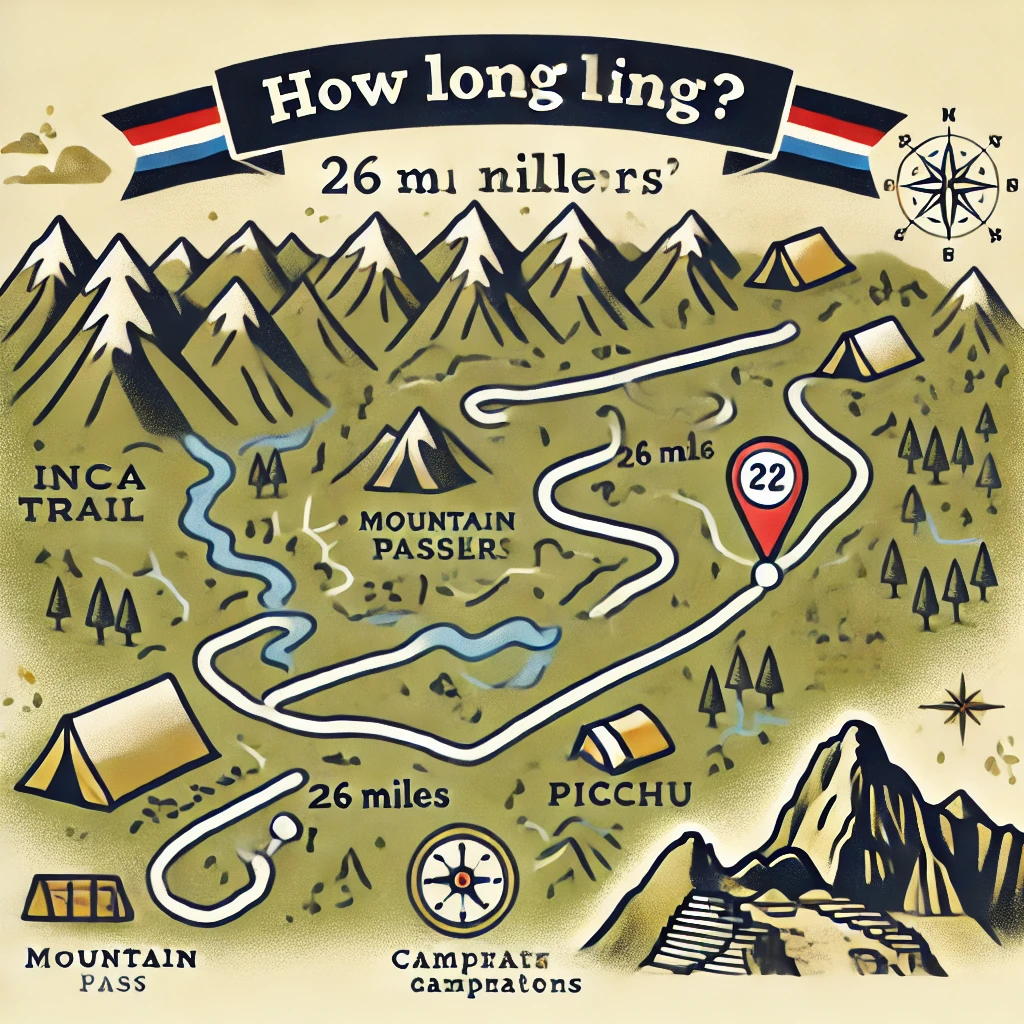Explore the Inca Trail with our comprehensive guide covering its overview, length, difficulty, and essential tips for an unforgettable hiking experience.Embarking on the Inca Trail is a dream adventure for many trekking enthusiasts and history buffs alike. Renowned for its breathtaking landscapes and rich cultural heritage, this iconic hike leads to the ancient ruins of Machu Picchu, offering a glimpse into the impressive Incan civilization. But before you lace up your hiking boots, it’s essential to understand the specifics of this legendary trail, including its length and difficulty level. Whether you’re a seasoned trekker or a novice explorer, knowing what to expect can significantly enhance your experience. In this guide, we’ll delve into the key details about the Inca Trail, including an overview of its terrain, the challenges you might face, and some insider tips to help you make the most of your journey. Get ready to discover the captivating world of the Inca Trail!
Overview of the Inca Trail
The Inca Trail is one of the most iconic hiking routes in the world, drawing adventurers and history buffs alike to experience its breathtaking landscapes and rich cultural heritage. This ancient path leads hikers through the heart of the Andes Mountains in Peru, ultimately culminating at the stunning ruins of Machu Picchu. Along the journey, trekkers encounter diverse ecosystems, archaeological sites, and panoramic views that showcase the beauty of South America.
Spanning approximately 26 miles (42 kilometers), the Inca Trail hike typically takes about 4 days to complete, although some may choose to enjoy the trek at a more leisurely pace. The trail is part of the Greater Inca Trail system, which was used by the Inca Empire to connect various regions across Peru. Through the years, it has become a beloved route for those seeking adventure and insight into ancient Incan culture.
Though the hike is undoubtedly rewarding, it is essential to understand that the Inca Trail can be quite challenging. It features steep ascents, uneven terrain, and varying altitudes, which require not only physical endurance but also proper acclimatization. As such, preparing for this trek is crucial for both safety and enjoyment. Whether you’re a seasoned hiker or a novice adventurer, the Inca Trail offers an unforgettable experience that celebrates the wonders of nature and the legacy of the Inca civilization.
Length and Difficulty of the Trail
The Inca Trail is one of the most celebrated trekking routes in the world, famous for its breathtaking scenery and rich history. The total length of the Inca Trail is approximately 26 miles (42 kilometers). This distance is typically covered over the span of four days, allowing hikers to experience a variety of landscapes, including cloud forests, mountains, and Incan ruins.
As for difficulty, the Inca Trail is considered a moderate to challenging hike. Hikers will encounter diverse terrain that ranges from gentle inclines to steep ascents. One of the most notable challenges is the ascent to Dead Woman’s Pass, which rises to an altitude of 13,828 feet (4,215 meters). Proper acclimatization is essential to tackle this high-altitude trek effectively.
It’s crucial for hikers to prepare adequately for the Inca Trail. Factors such as physical fitness, gear, and knowledge about the trail can significantly impact the hiking experience. Whether you’re an experienced hiker or a beginner, being well-prepared will enhance your adventure on this historic trail.
Tips for Hiking the Inca Trail
Hiking the Inca Trail is an adventure of a lifetime, but proper preparation and knowledge can make all the difference. Here are some essential tips to ensure a successful hike.
1. Acclimatize Properly: Before you hit the trail, spend a few days in Cusco or nearby areas to allow your body to adjust to the altitude. This will help reduce the risk of altitude sickness during your hike.
2. Pack Light: Since you’ll be carrying your own backpack, packing light is crucial. Consider bringing only the essentials, including a good quality sleeping bag, warm layers, and necessary personal items.
3. Stay Hydrated: It’s important to drink plenty of water while hiking. Carry a reusable water bottle and make use of purification tablets or filters to ensure safe drinking water along the way.
4. Choose the Right Gear: Invest in quality hiking boots that provide good ankle support. Additionally, ensure your gear is durable and weather-appropriate, as conditions can change rapidly.
5. Respect the Environment: The Inca Trail is a UNESCO World Heritage Site. Adhere to the principles of Leave No Trace, and make sure to dispose of your waste properly and respect local wildlife.
6. Hire a Guide: While it’s possible to hike the Inca Trail independently, hiring a knowledgeable guide can enhance your experience. They can provide insights on the history and culture of the Inca civilization as you trek.
By following these tips, you’ll be better prepared for the challenges of the Inca Trail and can fully enjoy this breathtaking journey through history.
Frequently Asked Questions
The total distance of the Inca Trail hike is approximately 26 miles (42 kilometers).Most hikers complete the Inca Trail in about 4 days, although some variations allow for a 2-day or 5-day trek.Key highlights along the Inca Trail include the Inca ruins of Wiñay Wayna, the stunning mountain scenery, and of course, the arrival at Machu Picchu.Yes, all hikers must obtain a permit to hike the Inca Trail, and these permits should be booked in advance as they sell out quickly.The best time to hike the Inca Trail is during the dry seasons, which are from May to September.The Inca Trail requires a moderate level of fitness, as it involves several steep climbs and high altitudes; training before the hike is recommended.Along the Inca Trail, there are designated campsites with basic facilities, but hikers must carry their own gear and food, or book through an organized tour.


